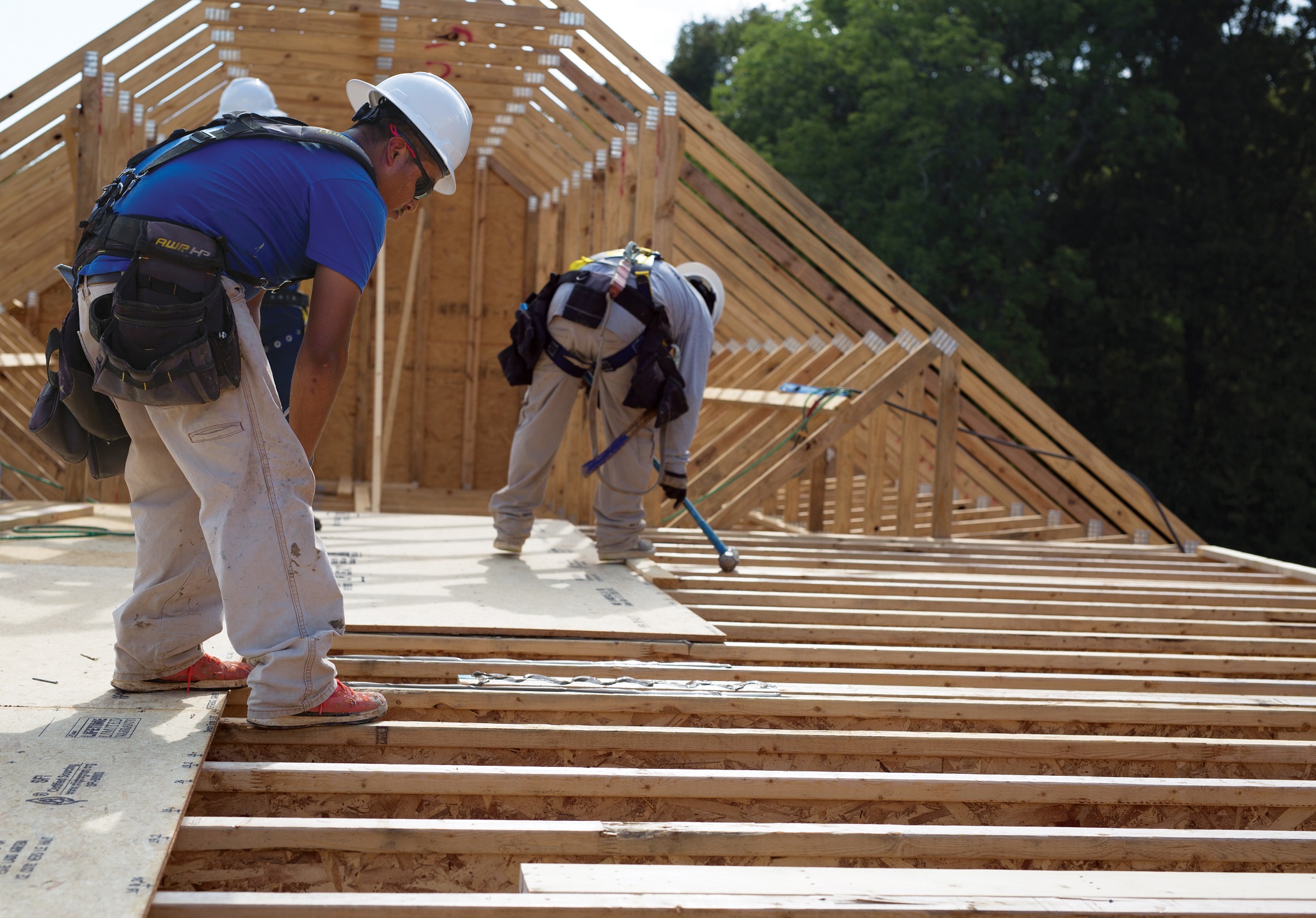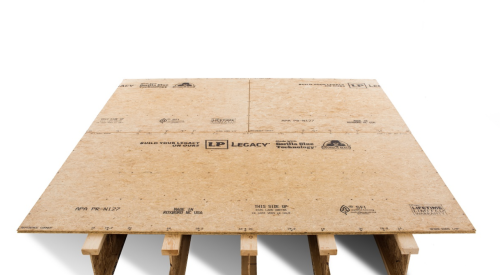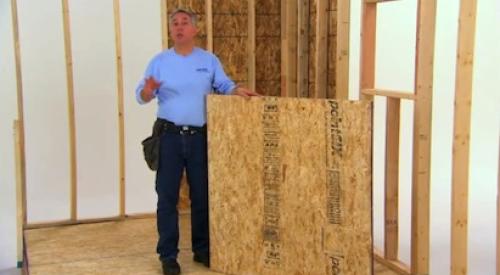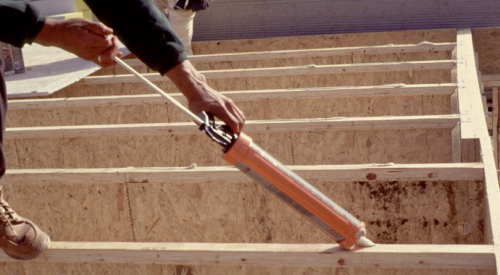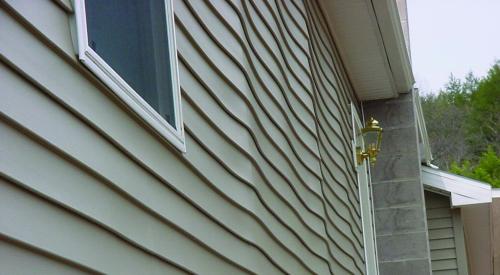Subflooring is fairly straightforward to install. But careless errors—whether due to inexperience or simply lack of focus—can impact the performance of the subflooring as well as the finished floor above, leading to movement and squeaks.
Here’s a back-to-basics refresher on common mistakes installers make and easy ways to avoid them.
- A Crooked 1st Row: A crooked first row of subflooring will lead to inconsistent spacing along the tongue-and-groove profile, negatively affecting the effectiveness of the joint. Always chock a line 4’ in from the foundation edge, used as a guide for the first row.
- Installing Panels Upside Down: For a proper match-up between the tongue-and-groove profiles, install panels with the logo and other markings facing downward. Look for the stamp that says, “This Side Down.” This also allows inspectors to read the trademark stamp from below in the event of a field inspection.
- Improper Spacing: Butting panels too tightly doesn’t allow room for the natural expansion and contraction that occurs with wood products, which can lead to buckling or raised joints. Most manufacturers recommend a 1/8” (0.125”) gap between the panel 4’ ends and 8’ edges. Some subfloor products, such as LP Legacy® premium subflooring, feature a self-spacing tongue-and-groove profile that produces a gap just under 1/8” along the edges.
- Over-Driving Panels: Over-driving panels can lead to a damaged T&G profile. Always drive from the groove side, using scrap wood (e.g. 2’x4’) between the hammer and profile. Stop when the tip of the tongue touches the back of the groove and avoid excessive force.
- Using the Wrong Fasteners: Inadequate fasteners can lead to unwanted movement in the subfloor. We recommend the use of code-approved nails or screws to ensure a secure hold between the panel and support members (refer to LP or APA product installation instructions).
- Improper Fastener Placement: Using too few fasteners can affect the stability of the subfloor, and fastening too close to panel edges can lead to splitting and a poor hold on the panel. Drive perimeter fasteners 3/8” (0.375”) back from the nearest panel edge and space them 6” on-center along panel edges and 12” on-center along center supports.
- Gluing Too Far Ahead: It’s tempting to lay down many beads at once. But if it skins over, the panels won’t adhere properly. For best results, work no more than one panel ahead. Also consider applying a small bead inside the groove to help reduce movement and noise.
- Delaying Fastening: Similarly, waiting too long to fasten the panels can also affect adhesion. Completely fasten each panel, as you go, to avoid future movement and noise.
- Letting Water Stand: For some subfloor products, standing water can lead to swelling, so be sure to sweep it off or drill drainage holes. This is less concerning for a premium product like LP Legacy, with superior moisture resistance that reduces the need for edge sanding, even in extreme conditions. LP Legacy panels also feature self-draining notches along the panel ends.
- Storing Panels Improperly: Leaving some types of panels exposed to the elements before installation may lead to damage and swelling. Always store panels in a clean, dry area and off the ground. Cover panels with plastic sheets or tarps; keep the cover open and away from the sides and bottom of the panels to allow for air circulation.

A well-installed subfloor is one that homeowners can forget about after moving in. Avoiding these common errors helps ensure your flooring system is stable, quiet and reliable for years to come.
And consider a product like LP Legacy® premium subflooring, which boasts superior moisture resistance and a combination of strength, stiffness, and density that contributes to better fastener holding and less deflection, for a more solid feel underfoot and less likelihood of nail pops and movement. Learn more at lpcorp.com/legacy.
